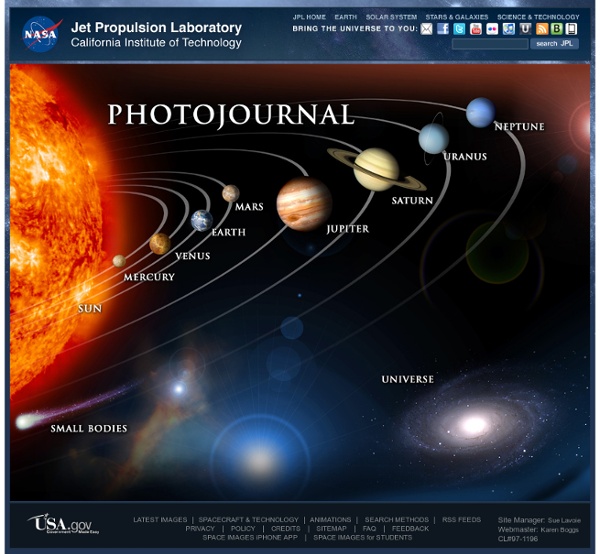Photojournal: NASA's Image
Astronomy Picture of the Day
Regards sur le Système Solaire
Regards sur le Système Solaire par Calvin J. Hamilton Regards sur le Système Solaire présente une aventure multimédia vivante dévoilant les splendeurs du Soleil, des Planètes, de la Lune, des Comètes, des Astéroïdes et plus encore. Contenu | Vedette de la semaine | Quoi de Neuf | Sites Miroir | Index des Images | Introduction au Système SolaireSoleil | Mercure | Vénus | Terre | Mars | Jupiter | Saturne | Uranus | Neptune | Pluton | Astéroïdes | ComètesMétéoroïdes & Météorites | Histoire | Gens | Données sur le Soleil, les Planètes & les SatellitesNavigateur de Données Planétaires | Glossaire | Crédits Prix et Reconnaissances Autres ressources en Astronomie sur WWW Logiciels pour visionner les images et les animations
Modern Mechanix
A S T R O L A B O . com | Yatoutskifo pour l'astro et plus
ΕΛΕΥΘΕΡΗ ΕΠΙΣΤΗΜΗ
Space Telescope Live
Related:
Related:



